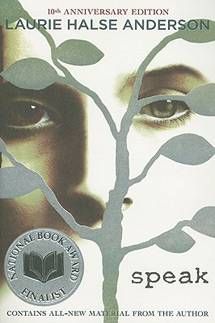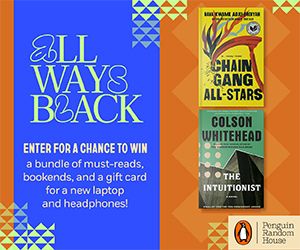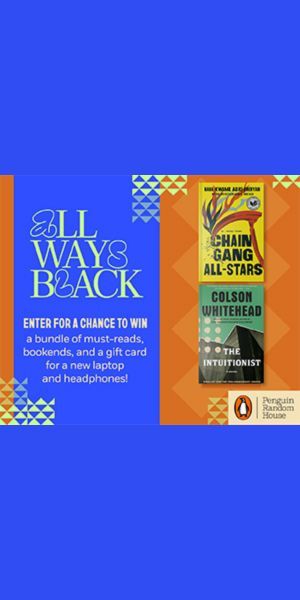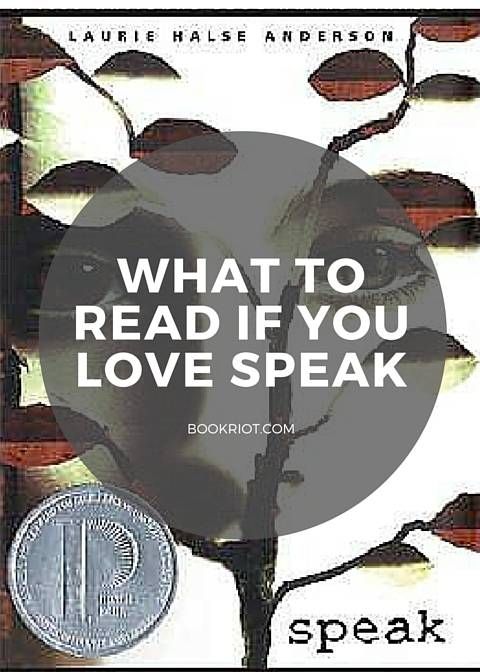
Beyond the Bestsellers: So You’ve Read SPEAK by Laurie Halse Anderson
For this month’s edition of “Beyond the Bestsellers,” I’m going to do something a little bit different. This series has focused on finding the best next reads to bestselling young adult titles and authors (including Ellen Hopkins, Sarah Dessen, “The Lunar Chronicles,” the Divergent series, and Miss Peregrine’s Home for Peculiar Children), and today, I thought instead of being specific to a variety of appeal factors, it would be worthwhile to talk specifically about content.

This is a heavy topic and one that can elicit strong reactions from readers. That’s the point. Anderson’s novel became a bestseller because it blew down the doors of silence surrounding this issue and how it’s portrayed and perpetrated in the teen world. These books are absolutely teen appropriate, and they’re also books that any adult who works with teens or cares about sexual violence more broadly should read (or at least be aware of). These books can change lives.
It would be easy to categorize these books as “problem novels,” but that’s a phrase weighted with a specific movement in young adult fiction’s history. These are far from that; they’re fully-fleshed, fully-realized stories about the trauma teens face every day — either first hand as victims or second hand as bystanders. Likewise, to suggest there are “too many” books like this devalues the stories to be told, overlooks the important issue to be discussed, and, in many cases, it strips away need to have stories about girls heard.
I’m purposefully not including spoiler alerts on these titles, so be aware that the possibility of having plot points spoiled in this reader guide is there. I’ve included ten titles with descriptions, and I’ve included a “further reading” list with additional titles. There are male and female voices represented, including victims, criminals, and those connected to either one. The violence within the stories varies, offering a look at the breadth of reactions and situations that encompass sexual assault and/or violence.
As always, and specifically in this reader guide, mileage for how well these books work for fans of Anderson’s Speak may vary. We already have a Laurie Halse Anderson and we already have a Speak; these books, though, add depth to the pool of realistic YA fiction that speaks to some element of sexual assault or sexual violence.

Pointe by Brandy Colbert (available April 10 from Penguin): Theo is an elite ballerina, and after four years of being missing — he was kidnapped — her best friend Donovan has returned home. But Theo knows she was connected to his disappearance, and as she pieces the past together, she realizes his kidnapper was the same man who took advantage of her age and pursued an illegal sexual relationship.
Fault Line by C. Desir: Ben has it hard for Ani. She’s rough around the edges and maybe not the kind of girl that Ben’s friends can see him with. But he can’t resist. One night at a party, when she’s not with Ben, something terrible happens to Ani. Now, Ben wants to know what happened, who is at fault, and how he can best be there for a girl whose spirit has been rattled, if not completely shattered.
Just Listen by Sarah Dessen: Perhaps closest as a read alike to Anderson’s novel, Dessen’s story tackles what happens when Annabel loses the popularity among the peers she had following a party. It’s not until she develops a close bond with Owen and is asked by a fellow model to testify about what happened at that party that we learn Annabel was a rape victim.
Panic by Sharon Draper: Told through numerous points of view with interweaving plot threads, Draper’s novel looks at what happens to Diamond when she leaves her best friend’s side at the mall and follows a man home who promises her a job in an upcoming movie. She’s unaware what the movie may be, and she’s caught even further unaware when the man takes advantage of her naivety — and more.

Inexcusable by Chris Lynch: Kier is a good football player, a good son, and a good guy. But his girlfriend Gigi thinks otherwise after a night where he didn’t play the role of the good guy. This is a story not from the victim’s point of view, but the criminal’s.
Live Through This by Mindi Scott: While it seems like Coley’s life isn’t too bad and her family — despite not being “traditional” — gets along, the truth is that Coley’s the victim of sexual assault at the hands of one of her siblings. Scott’s painful and honest novel is about Coley coming to terms with what’s happening to her and figuring out a plan to save herself.
Faking Normal by Courtney Stevens: Over the summer, something bad happened to Alexi and she won’t tell anyone about it. But now that her family has allowed a classmate who himself is in a tough place to live with them, Alexi finds herself needing to confront the truth: she was a victim of sexual violence and sharing who did this to her could unravel her entire family structure.
Some Girls Are by Courtney Summers: The boyfriend of Regina’s best friend is sexually aggressive toward her at a party, but no one will believe Regina’s the victim of his actions. She’s frozen out of her elite social circle as a result. While primarily a story about girl-on-girl bullying, the story begins with sexual violence and it’s a theme that emerges again and again throughout.
Additional young adult fiction titles to check out that tackle some component of sexual violence include:
- Canary by Rachele Alpine
- Where the Stars Still Shine by Trish Doller
- You Against Me by Jenny Downham
It’s also worth noting the excellent Sexual Violence in YA Lit project, which explores this topic in further depth, including book discussions and further resources.
Talking about sexual violence with teen readers is tough, but an easy way into the discussion is to provide a wealth of reading choices for teens — and adults. As evident through the titles here, it’s a topic that isn’t limited to one voice, one perspective, or one story. There are never going to be “too many” titles that are read alikes to Anderson’s Speak thematically. If today’s world is any indication, there might never be enough.









